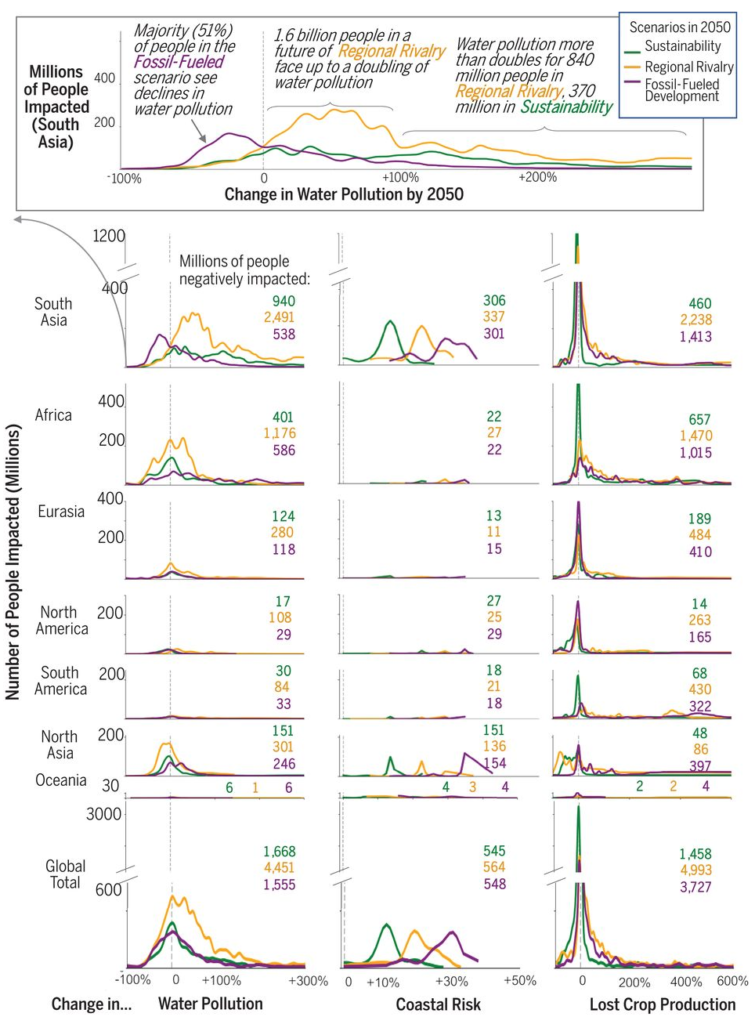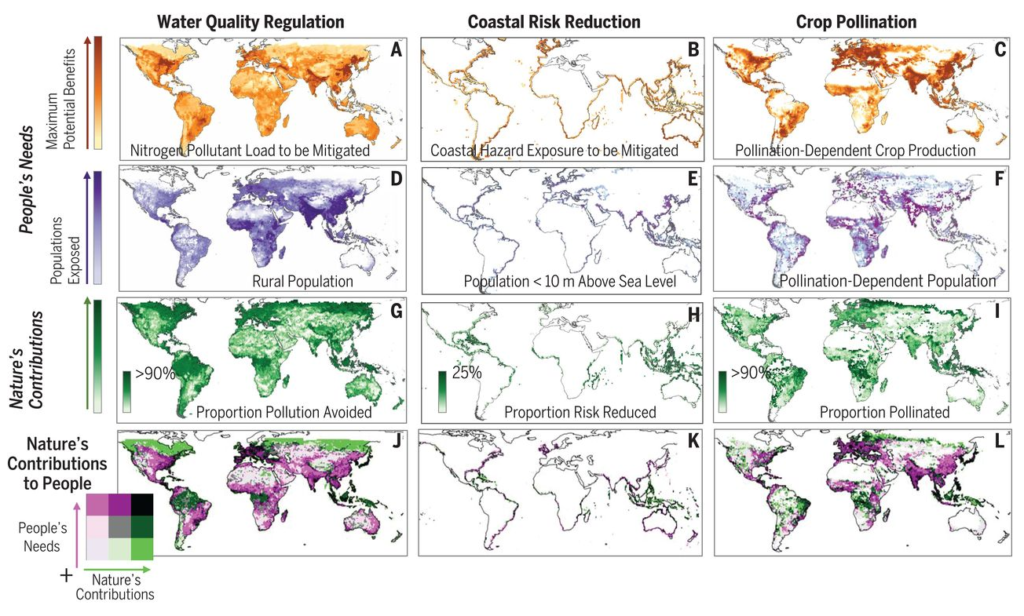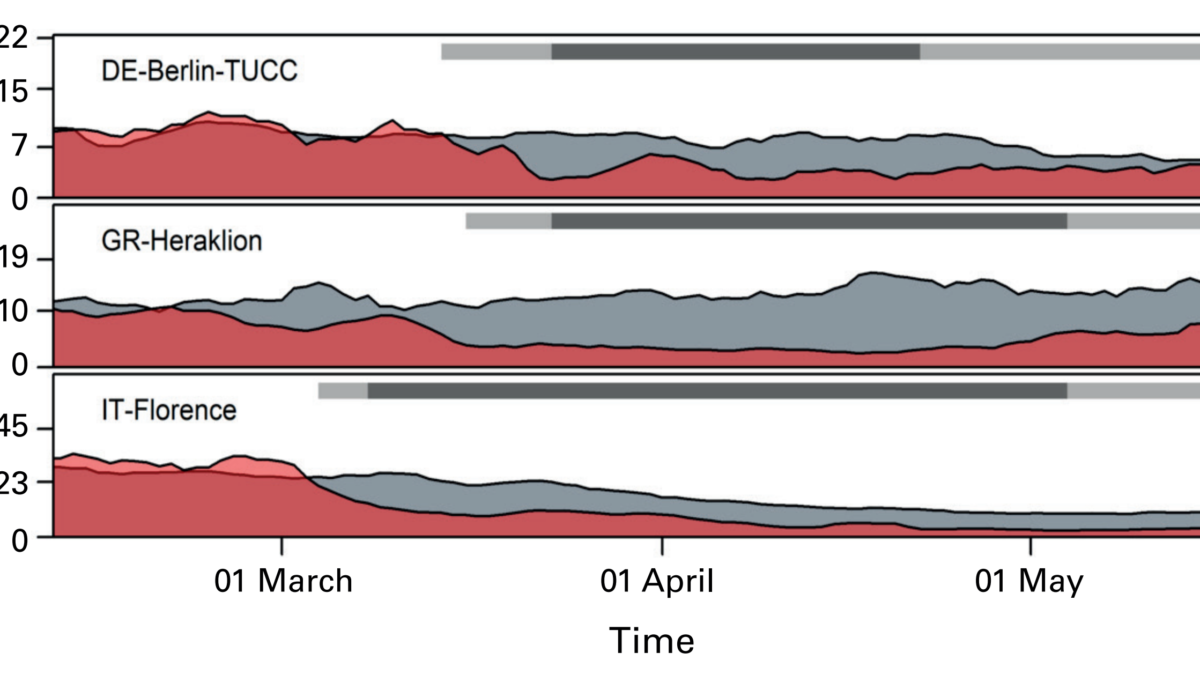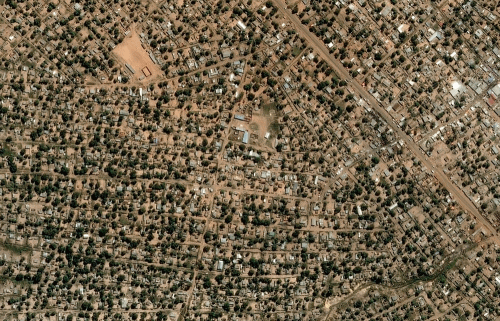Billions face food, water shortages over next 30 years as nature fails – Study paints “a deeply worrying picture of the societal burdens of losing nature”

(Inset at top) A schematic of how to interpret the results, using South Asia as an example. Plots show the number of people affected (population exposed from Fig. 1) by different magnitudes of change in benefit gaps (nitrogen pollution in drinking water, risk of coastal hazards, and lost crop production due to insufficient pollination) for future scenarios of sustainability (SSP 1, RCP 2.6) in green, regional rivalry (SSP 3, RCP 6.0) in yellow, and fossil-fueled development (SSP 5, RCP 8.5) in purple. Numbers inset in each plot show millions of people negatively affected in each scenario (colored accordingly). RCP, representative concentration pathway. Graphic: Chaplin-Kramer, et al., 2019 / Science
By Stephen Leahy
10 October 2019
(National Geographic) – As many as five billion people, particularly in Africa and South Asia, are likely to face shortages of food and clean water in the coming decades as nature declines. Hundreds of millions more could be vulnerable to increased risks of severe coastal storms, according to the first-ever model examining how nature and humans can survive together.
“I hope no one is shocked that billions of people could be impacted by 2050,” says Rebecca Chaplin-Kramer a landscape ecologist at Stanford University. “We know we are dependent on nature for many things,” says Chaplin-Kramer, lead author of the paper “Global Modeling Of Nature’s Contributions To People” published in Science.
That nature is in sharp decline was made clear in the first-ever global assessment of biodiversity released earlier this year. Human activity has resulted in the severe alteration of more than 75 percent of Earth’s land areas and 66 percent of the oceans, putting a million species at risk of extinction, according to the Global Assessment Report on Biodiversity and Ecosystem Services.
The human-nature relationship
Human well-being is dependent upon nature’s contributions, also known as ecosystem services. The new model looked at three of nature’s contributions or services: providing clean water; coastal protection, or crop pollination. The model reveals that the future declines in those services will hit people in Africa and South Asia hardest because they are more directly dependent on nature, says Chaplin-Kramer in an interview. People in wealthier countries can buffer the impacts though imports of food and infrastructure.
To look at clean water, the model mapped plants that grow near lakes and rivers. Depending on topography, climate, runoff, and other factors, estimates can be made of how much excess nitrogen fertilizer from upstream farm fields remains in waterways. When overlaid with maps of drinking water sources for people, it estimates the potential exposure to nitrate pollution. Other studies that measured actual levels of pollution were used to validate the model, says Chaplin-Kramer. […]

The study paints a “deeply worrying picture of the societal burdens of losing nature,” writes Patricia Balvanera, an ecologist at the Universidad Nacional Autónoma de México in an accompanying article in Science. “What’s really scary is that the model only looked at three of the 18 contributions to human well-being we’ve identified,” says Balvanera in an interview. [more]
Billions face food, water shortages over next 30 years as nature fails
Global modeling of nature’s contributions to people
ABSTRACT: The magnitude and pace of global change demand rapid assessment of nature and its contributions to people. We present a fine-scale global modeling of current status and future scenarios for several contributions: water quality regulation, coastal risk reduction, and crop pollination. We find that where people’s needs for nature are now greatest, nature’s ability to meet those needs is declining. Up to 5 billion people face higher water pollution and insufficient pollination for nutrition under future scenarios of land use and climate change, particularly in Africa and South Asia. Hundreds of millions of people face heightened coastal risk across Africa, Eurasia, and the Americas. Continued loss of nature poses severe threats, yet these can be reduced 3- to 10-fold under a sustainable development scenario.


